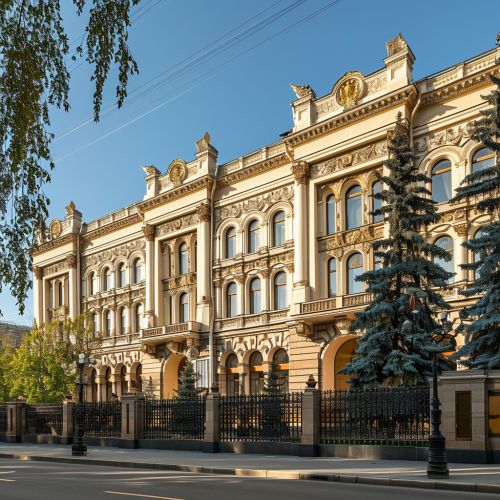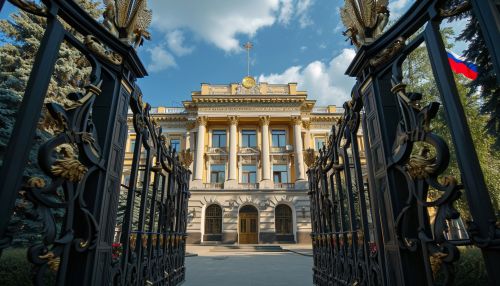Central Bank of Russia
History
The Central Bank of Russia (CBR), also known as the Bank of Russia, is the key monetary authority in the Russian Federation. Established on July 13, 1990, the CBR is responsible for implementing monetary policy, issuing currency, and overseeing the stability of the Russian financial system.


The CBR was created as a result of the transformation of the State Bank of the USSR into a central bank for the Russian Federation. The bank's primary function was to finance the Soviet economy. However, with the dissolution of the USSR in 1991, the bank was restructured and given the responsibility of managing Russia's monetary policy.
Structure and Organization
The Central Bank of Russia is governed by a Board of Directors, which is headed by the Governor. The Governor is appointed by the President and approved by the Federal Assembly. The Board of Directors includes the Governor, First Deputy Governors, Deputy Governors, and the Chief Accountant.
The CBR has several departments and divisions that handle different aspects of its operations. These include the Monetary Policy Department, the Financial Stability Department, the Banking Supervision Department, and the Cash Circulation Department, among others.
Functions and Responsibilities
The CBR has several key functions and responsibilities. These include:
- Implementing and maintaining monetary policy: The CBR is responsible for setting and implementing monetary policy in Russia. This includes managing inflation, controlling the money supply, and setting interest rates.
- Issuing currency: The CBR is the sole issuer of the Russian Ruble. It is responsible for the design, production, and distribution of banknotes and coins.
- Supervising financial institutions: The CBR supervises all financial institutions in Russia, including banks, credit institutions, and insurance companies. It has the power to grant and revoke licenses, conduct audits, and enforce regulations.
- Managing the country's foreign exchange reserves: The CBR manages Russia's foreign exchange reserves, which include foreign currency, gold, and other assets.
- Ensuring financial stability: The CBR is tasked with ensuring the stability of the Russian financial system. This includes monitoring and managing risks, preventing financial crises, and maintaining public confidence in the system.
Monetary Policy
The Central Bank of Russia's monetary policy is aimed at maintaining price stability and preventing inflation. The CBR uses several tools to achieve these goals, including interest rates, reserve requirements, and open market operations.
Interest rates are one of the main tools used by the CBR to control inflation. By raising or lowering interest rates, the CBR can influence the cost of borrowing and the supply of money in the economy.
Reserve requirements are the amount of funds that banks must hold in reserve. By adjusting these requirements, the CBR can influence the amount of money that banks can lend.
Open market operations involve the buying and selling of government securities. By conducting these operations, the CBR can influence the amount of money in circulation.
Financial Supervision
The Central Bank of Russia is responsible for the supervision of all financial institutions in Russia. This includes banks, credit institutions, insurance companies, and other financial entities.
The CBR's supervisory role involves granting and revoking licenses, conducting audits, and enforcing regulations. The bank also has the power to impose sanctions on institutions that violate banking laws and regulations.
The CBR's supervision is aimed at ensuring the stability and integrity of the Russian financial system. This includes preventing financial crises, managing risks, and maintaining public confidence in the system.
Criticisms and Controversies
The Central Bank of Russia has faced several criticisms and controversies over the years. These have largely centered around its monetary policy, its role in the Russian economy, and its handling of financial crises.
Critics have argued that the CBR's monetary policy has often been too tight, leading to high interest rates and slow economic growth. Others have criticized the bank's handling of financial crises, arguing that it has often been slow to respond and ineffective in its measures.
Despite these criticisms, the CBR has also been praised for its role in stabilizing the Russian economy and maintaining financial stability.
